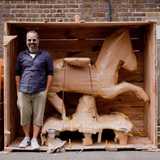James Brett / London
Everything changes
James Brett: hater of pretence in art, lover of the weird and wonderful and founder of a new kind of museum that’s pulling in the crowds. Monocle meets him in the run up to his next show at London’s Selfridges department store.
“Since The Museum of Everything got going, there’s no such thing as a routine. Every day throws up a million different weird scenarios. It’s not that I think it’s creative to function this way, it’s just that the process is naturally disorganised, getting through the day is enough and half the time I sound like I’m in rehab!
The Museum of Everything started when I was in the Southern states of the US. The folk art I discovered was cool, without being too complex. It led to more psychological work, to paintings by characters on the edges of society, by artists with mental illness and disabilities. It’s funny, no-one in Britain was showing this sort of art but I knew there might be a public appetite for it.
I didn’t look at art much before then. I liked graffiti, cartoons, film – the low arts, not the high arts – and subcultures, especially black American culture and music. This art also came from that same end of the spectrum. It was about good vibes and maybe more about feel than look. As I got into it, I saw the really good artists all had something special, it wasn’t just a hobby, they had vision. It was different to mainstream art – significantly less expensive and significantly more interesting – not young people with ideas from art school, but people with a life trying to understand that life. They were not professional artists but they weren’t amateurs either; they were something else, something in the middle.
The artists in the museum’s new show – Exhibition #4 – come from art studios for people with learning disabilities. They often have communication problems and so their art maps out a reality that is true only to them. It’s very private, like a diary; and sometimes you’d think it wasn’t meant to be seen by anyone else.
Mainstream art is often about aesthetics or projecting ideas, but this work is different, incredibly personal and about the beginning of life, why we’re here. It is very creative – isn’t that what art was always meant to be about? We might not know what was going through their minds when they made this, but at least we can give it as much time and commitment as mainstream art.
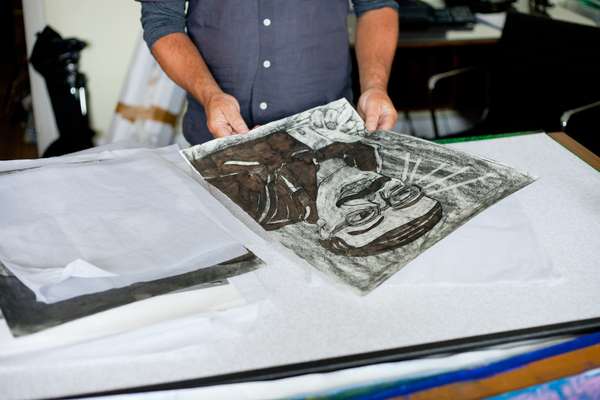

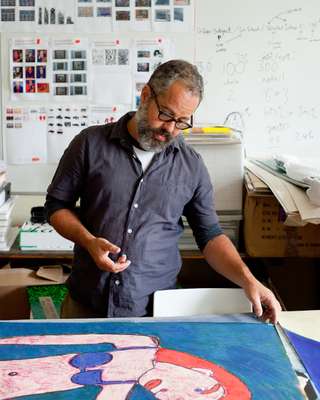
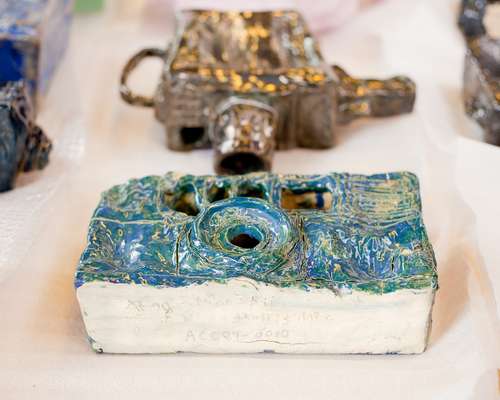
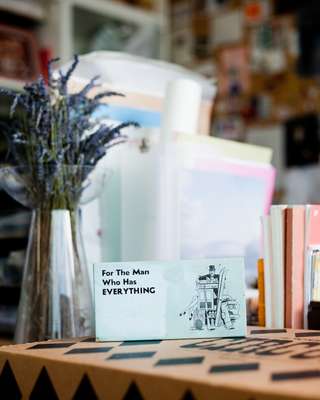
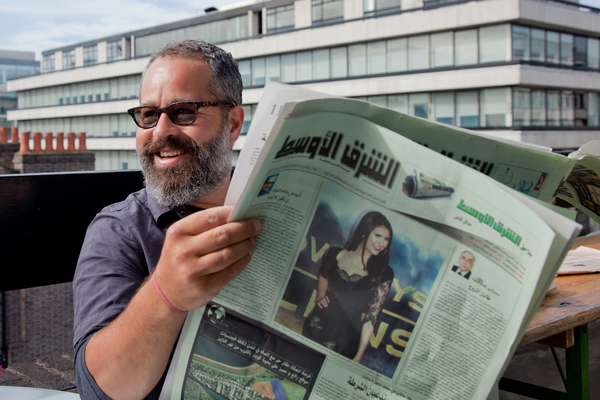
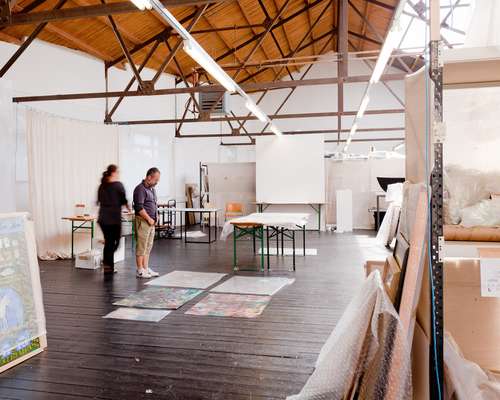
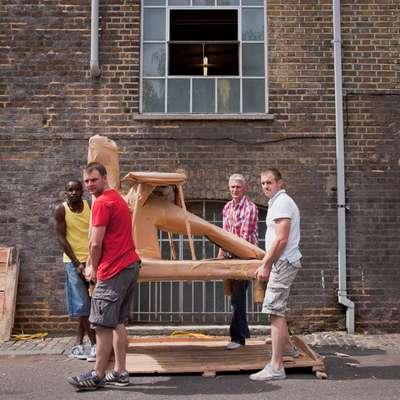
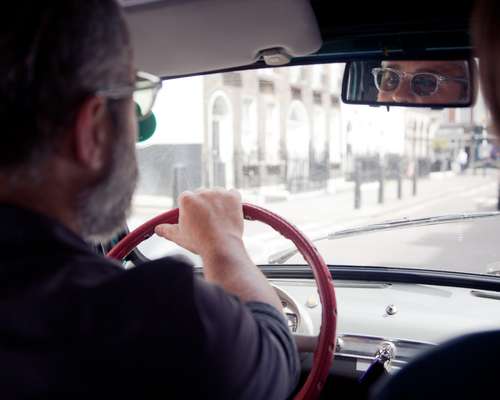
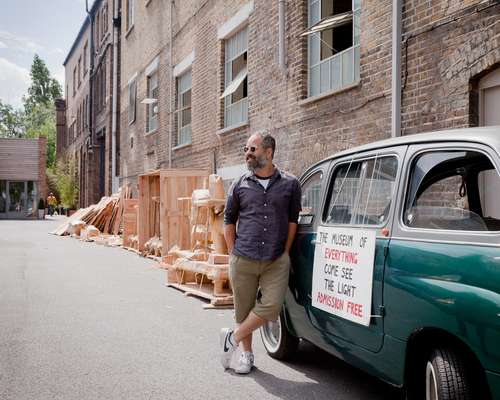
I’m quite an obsessive, accumulative personality – but when someone first told me that what I was doing was collecting, I was a bit offended. It struck me as a very high-faluting way of describing what I was doing. What is the difference between a shopper or a collector? In a way, words are the enemy of art. Definition often becomes a prison.
Our name – The Museum of Everything – was a sign from God. I heard about William Brett – builder, cricketer, proud resident of the Isle of Wight – who decided in his eighties to buy his childhood schoolhouse and fill it to the rafters with all the stuff he’d ever collected, with his whole life: old records, wine bottles, bullets, army uniforms, a dinosaur bone, Christmas decorations, toilet seats. It’s more than a collection, it’s an environment, exactly what I’m interested in.
I asked William if – as a Brett – I could open a London branch of The Museum of Everything. He said yes and the museum was born. What was good about the name was that you didn’t have to be so intellectually rigorous and it was still a museum – and you get a lot of respect when you’re a museum. The problem with formal museums is the way they change you. As soon as you walk in, you’re on tip-toes, nodding and ruminating.
I once went to a talk where Gilbert & George – who’d had a lot of early success – talked about wanting to do something that wasn’t guaranteed to fail exactly, but certainly was unexpected. I’ve been thinking about that as I think about our new space, this incredible commercial environment – Selfridges.
Selfridges have a history of showing art and if you squint a bit, it looks like a museum; it is, but it’s still Selfridges! We’re going to have all the windows in the place, a small shop on the ground floor, then you walk down the stairs and into their exhibition hall which we’ve turned into something that looks like somebody’s home, peppered with about 50 different artists’ works. Artistically, it’s a complicated gesture, but we’re really just turning the store into The Museum of Everything. It could change the face of art, alternatively it could fail fantastically.
Organising it, I’m on the phone a lot, I talk to people directly. I can be indecisive, that’s why we sometimes end up doing things at the last minute. I like to mull things over.
I used to live in Los Angeles and worked in film, directing music videos, commercials and TV. It’s such a long road. Starting the museum – where you see the results really quickly – is wonderful. Although it doesn’t have the revenue of a big, successful film, we have the impact, the visibility and we’ve changed people’s lives, we’ve become meaningful. So the museum’s started to become a movie and that fascinates me. There’s a narrative twirling around the whole thing.
This time around we’ll be using our reputation to introduce people to a very different idea of what art can be, of who is or isn’t an artist. We’ve certainly got enough visibility for people to come with eyes open – and because it’s in Selfridges, a lot of people will come, so the big challenge is to appeal to the art community, who can be a bit myopic and self-referential, as well as the general public. It would be terrible if it was just one or the other – or neither!
I look to Saatchi as the man who really pioneered the new wave of collector as curator and opened people’s eyes to different things. But in no way is The Museum of Everything related to that slightly cynical approach, where you accumulate to create a market. Few of these artists will ever hit that sort of price range but there is an opportunity to help them be more visible, to show the world some of these incredible works.
If there’s one danger, it’s the desire to be liked – it’s the worst thing if you’re trying to do something creative. You have to fight it if you want to do something with integrity, to speak authoritatively, to change the world. That’s the goal and only you’ll know if you achieved it or not. I go with my gut, moderated by the ideas of people I respect. After all, the best creative decisions are accidents; come on, the whole museum’s an accident!”
The Museum of Everything’s Exhibition #4 opens 2 September-25 October, musevery.com
James Brett’s CV
1967 Born in London
1989 Graduates London University, LLB (Hons)
1990 Directs/produces music videos/ commercials/TV
1998 Graduates American Film Institute, MFA (Hons)
2003 Wins multiple film awards, including Sundance
2004 Designs/creates private/public architectural spaces
2009 Opens The Museum of Everything #1 in Primrose Hill, London
2010 Opens The Museum of Everything #2 at Pinacoteca Agnelli, Torino; The Museum of Everything #3 at Tate Modern, London.
2011 Exhibition #4 opens at The Museum of Everything at Selfridges, London
James Brett’s favourite museums
1. The Museum of Innocence Istanbul
2. Borderless Art Museum NO-MA Shiga, Japan
3. Sir John Soane’s Museum London
4. The Museum of Jurassic Technology Los Angeles
5. Museu Casa do Pontal Rio de Janeiro
6. Le Palais Idéal du Facteur Cheval Hauterives, France
7. American Visionary Art Museum Baltimore
8. International Manga Museum Kyoto
9. Elias Sime Museum Addis Ababa
10. Design Museum Holon, Israel
11. Museu Bispo do Rosário Rio de Janeiro + The Museum of Everything Isle of Wight, UK

